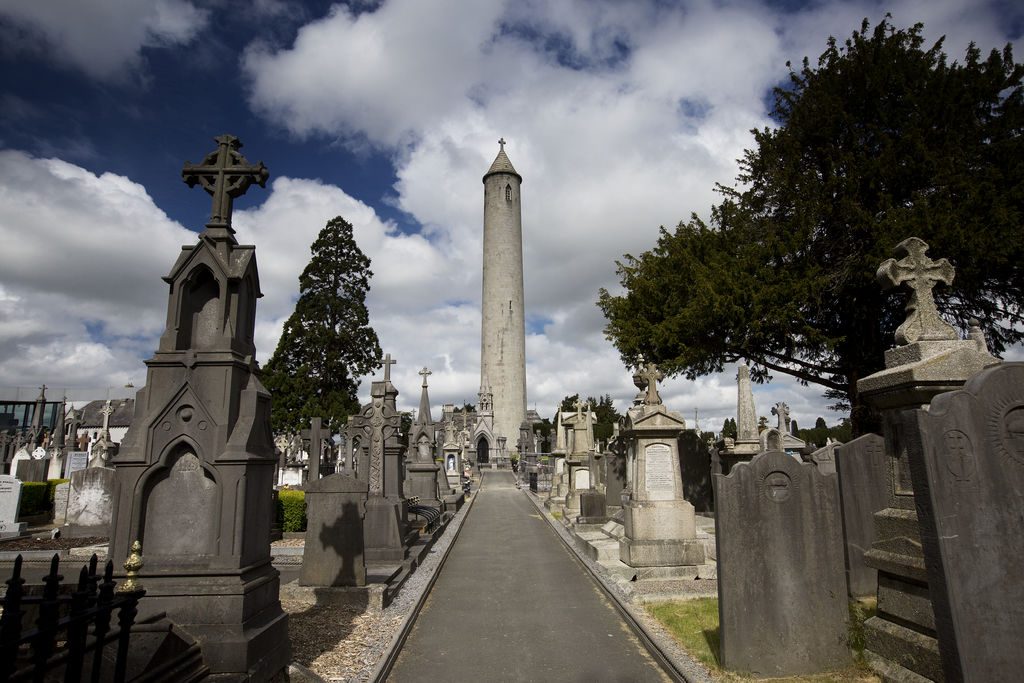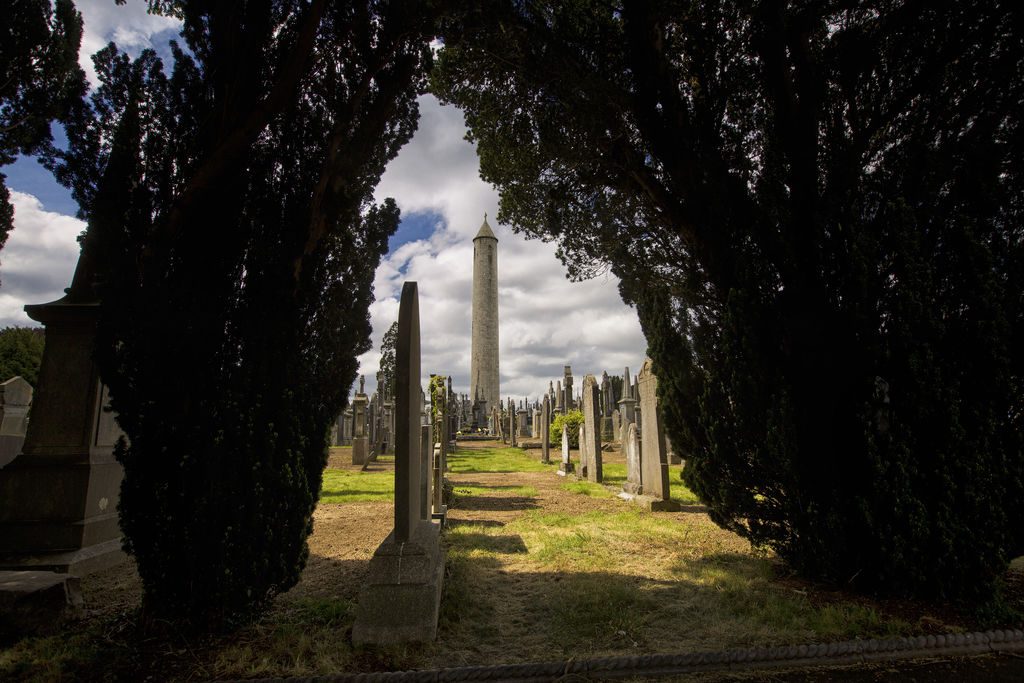Glasnevin Cemetery
If you’re thinking about things to do on the weekend in Dublin, perhaps visiting a cemetery is not on your list. You may be considering shopping or walking in one of the many green areas of Dublin such as St Stephen’s Green and Phoenix Park. There is another area of greenery you could take your walk in – the Botanical Gardens, adjacent to Glasnevin Cemetery. The cemetery is a fascinating exploration of Ireland’s history and the figures that have influenced the history of not just Dublin, but Ireland itself.
The cemetery covers 124 acres and there are 1.5 million graves. This means there are more graves than there are people currently alive in Dublin. The population of Dublin is approximately 1.3 million at present. It was originally named Prospect Cemetery due to its location close to the area of Prospect. Since that time, the cemetery has grown extensively and is a bit of a who is who of Ireland with plenty of well known names laid to rest here.
History and founding by Daniel O’Connell
One of these is the founder of the cemetery itself, Daniel O’Connell. He founded the Dublin Cemeteries Committee in 1828 and helped to create a place that anyone could be laid to rest with dignity – regardless of denomination and regardless of the lack of belief in a religion. For years the division between Catholics and Protestants had been wide, Daniel O’Connell did everything he could to close the divide and for that his grave holds pride of place in Glasnevin Cemetery.
His mausoleum is marked by a 168 ft high round tower. The tower was built specifically for Daniel O’Connell and now marks his resting place with his crypt containing the sarcophagus of O’Connell along with caskets of his family members in the next room. You can reach inside the sarcophagus itself which has openings and touch the casket; it is said to be good luck!
Prior to the introduction of Glasnevin Cemetery, Irish Catholics had no cemeteries of their own and were highly restricted in their usage of Protestant graveyards. O’Connell pushed for the opening of a ground for all, not just Protestants but for the persecuted Irish Catholics also, even for non-believers. This is why O’Connell felt so strongly about creating this place of burial and one of the many reasons he is highly revered by the Irish. Daniel O’Connell is so well known internationally that there is even a statue of him in Melbourne, Australia outside St Patrick’s Cathedral.
The first burial occurred the day after the cemetery opened in 1832; tragically for a young child, 11 year old Michael Carey. The cemetery continues to be developed and refurbishment is occurring on Daniel O’Connell’s round tower which was damaged by a bomb placed there by loyalists in 1971. Since then, the staircase within the tower has been out of use – remarkably the rest of the tower survived intact, only the staircase and windows and doors were damaged.
The tower is the most prominent landmark when you enter the cemetery from the entrance next to the museum. It is evident on the skyline even upon approach to Glasnevin Cemetery. It is a peaceful place and as a functioning cemetery, respect is needed for any funerals that are underway during your visit. I am sure this is common sense but it can be confronting to come across a hearse and mourners as you visit the cemetery. I saw two and a sadness descended upon me as I considered the pain of those mourners. Give the funeral party a wide berth, give them their privacy and ensure you remember that many visitors are not there for tours but for private visits or attending funerals. That housekeeping aside, there are many stops to make and many well-known headstones and graves to see.
Charles Stuart Parnell
The grave for Charles Stuart Parnell is unique – a single granite stone simply marked ‘Parnell’. He wanted to be buried close to the people. His grave is a wide mound of grass, marked only by the stone. Hidden behind the grassy mound however is the fact that Parnell is actually buried on top of a cholera pit. There are 13,000 people buried underneath that mound in a pit that authorities at the time had hoped would contain the spread of cholera. It didn’t, authorities had not realised that water beneath the burial ground would continue to allow the disease to be passed on through contaminated water. Their bodies were buried here long before Parnell who was buried, per his wishes, near the people.
Michael Collins
A very popular grave, visited often and covered in flowers on our visit was that of Michael Collins. Collins has his own private burial place, set away from other graves in the general vicinity. Collins was a soldier and a politician who played an important role in the struggle for Irish independence. He was shot and killed in August 1922 during the Irish Civil War at the age of 31. Collins has been featured in films, songs, a play and even in a video game. He is said to have had a personal charm which made many respect him. He was deeply patriotic and fond of the people of Ireland. The final entry in his field diary is “The people are splendid”. Perhaps it is this fact, that he appeared to be what would nowadays be referred to as a ‘people person’, that explains his ongoing popularity, even many years after his death.
The headstones themselves vary in style – many are the Celtic cross, some are of the Virgin Mary and child, some depict angels, others are of St Patrick and many more are simple slabs usually made of limestone. The grounds are incredibly well kept; it is a lovely walk in any season. I was particularly taken by the line of trees creating a natural hedge down one of the roads. They are impressive as they form a natural arch across the road; their green leaves creating a canopy above.
Tours
On this cold morning, the visit is a fascinating introduction into Irish history, the key people that influenced Ireland’s journey towards independence and there are many more notable graves here such as Roger Casement, Kevin Barry and Constance Markievic to name a few.
The guide is very knowledgeable, friendly and keen to share information. It is a place that leaves you profoundly affected. As you hear the stories of those buried here you feel a multitude of emotions – sadness, pride, even laughter as you hear humorous anecdotes that help to lift away the cloud of sadness. Hearing about the lives lost, their families and their stories is a personal experience. It is an experience of Irish history not to be missed. After the tour, make sure to pop into the museum on site which goes into further details about those buried here, their stories and the story of the revolution in Ireland which led to independence.



